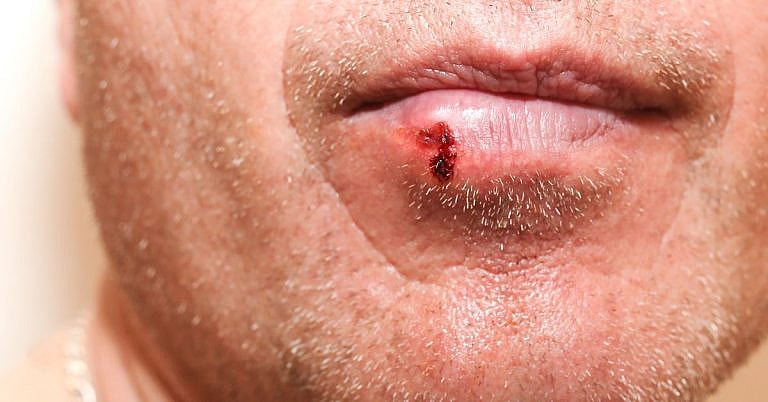What Is Atherosclerosis?
[trp_language language=”en_US”]
Atherosclerosis is a condition in which fatty deposits, known as plaque, atheroma, or atheromatous plaque, build up within the walls of the arteries. Over time, these deposits of plaque may become larger, narrowing the arteries and restricting blood flow to certain organs.
Atherosclerosis is related to a number of cardiovascular conditions, including coronary heart disease and stroke. There are a variety of risk factors associated with the condition, with some of the most common including high cholesterol levels, high blood pressure, diabetes, smoking, and obesity.
Although atherosclerosis is a potentially serious condition, it can be managed through lifestyle changes and treatment of its underlying causes.[1]
Atherosclerosis is a specific variety of arteriosclerosis, though the two terms are sometimes used interchangeably. Arteriosclerosis refers to hardening and loss of elasticity in the arteries, which can lead to the same complications as those associated with atherosclerosis.[2]
Causes of atherosclerosis
Atherosclerosis is caused by a buildup of plaque in the artery walls. Plaque is composed of calcium, cholesterol, fats, and other substances found in the blood. If it hardens, plaque can block the arteries and restrict blood flow.[3]
A number of pre-existing conditions, lifestyle choices, and other factors can make atherosclerosis more likely. The most common of these include:[4]
- High cholesterol levels
- High blood pressure
- Diabetes
- Smoking
- Obesity
- Lack of physical activity
- Unhealthy diet (high in salt, sugar, fats and cholesterol)
- Aging
- Family history of cardiovascular disease
- Stress
- Alcohol consumption
Conditions associated with atherosclerosis
Atherosclerosis may partially, or totally, block the arteries in the heart, brain, legs, arms, pelvis or kidneys. If this occurs, various conditions can result. These include:
Heart disease
A buildup of plaque in the coronary arteries, which supply oxygen-enriched blood to the heart, can lead to a significant narrowing of these arteries. If this happens, the blood flow to the heart is restricted – a condition which is called coronary artery disease or coronary heart disease. It is the most common condition associated with atherosclerosis.
Coronary heart disease can cause angina – feelings of pain, squeezing, or tightening in the chest. Furthermore, if one of the plaques ruptures or a clot of blood or fat gets stuck in the narrowed blood vessel, a heart attack may occur; this is a leading cause of mortality in the USA.[5][6][7]
Cerebrovascular conditions
Atherosclerosis can lead to a range of cerebrovascular conditions, including stroke and transient ischemic attack, sometimes called a mini-stroke. These conditions occur when plaque builds up in the arteries leading to the brain, restricting blood flow and starving the brain of oxygen.[4]
Peripheral arterial disease
The peripheral arterial disease generally refers to a narrowing of the arteries in any location other than the heart or brain, with the legs being the most commonly affected area. Atherosclerosis is one of the main causes of this condition. When affecting the legs, the peripheral arterial disease is characterized by pain in the calves, especially when walking or exercising.[8]
Vascular dementia
Vascular dementia is a condition that results in memory loss, thinking problems, and issues with language as a result of a reduced supply of blood to the brain. Along with Alzheimer’s disease, vascular dementia is one of the most common types of dementia.
Chronic kidney disease
Chronic kidney disease develops when the kidneys become unable to perform properly their function of filtering excess water and other waste products from the blood. A buildup of plaque in the arteries of the kidneys can cause chronic kidney disease, which can eventually lead to kidney failure.[9]
Erectile dysfunction
Atherosclerosis is among the leading causes of erectile dysfunction, the condition of being unable to get or maintain an erection. An erection is caused by a rush of blood to the penis. When the blood vessels in the penis begin to narrow, blood flow is restricted, causing erectile dysfunction.[10]
Read more about Erectile Dysfunction »
If you are concerned that you may have one of these conditions.
Diagnosing atherosclerosis
Diagnosing atherosclerosis will generally involve a doctor looking at the person’s medical history, a physical examination, and a range of tests.
During the physical examination, a stethoscope will normally be used to listen to the person’s heartbeat and blood flow in the vessels. The medical professional will take special care to listen for sounds that indicate the narrowing of the blood vessels, which can often indicate the presence of plaque and clogged arteries.
Tests that may aid a diagnosis of atherosclerosis include:[11]
- Blood pressure measurement: A doctor will check whether the readings are out of range.
- Blood tests: To check the levels of fats, sugars, cholesterol and protein in the blood. Read more about blood tests.
- Electrocardiogram (ECG): A method for testing the electrical activity of the heart.
- Chest X-ray: An image of the organs and blood vessels within the chest is taken, allowing doctors to check for abnormalities.
- Echocardiography: An ultrasound is used to create an image of the heart. This can give doctors a holistic picture of the heart’s health.
- Computed tomography (CT) scan: A computer-generated image of the body is created, allowing doctors to see signs of artery narrowing or hardening.
- Angiography: A contrast dye is injected into specific blood vessels, which can then be visualized by X-ray. Catheters are often used. This test allows doctors to see signs of atherosclerosis.
Treating atherosclerosis
At present, no treatment exists to reverse atherosclerosis. However, there are a variety of ways to slow the progress of the condition and reduce the risk of complications, such as heart attack and stroke.[12] These include:[1]
- Lifestyle changes that are also used to help prevent atherosclerosis (see below)
- Statins and other medications used to treat high cholesterol
- Medications used to treat high blood pressure
- Low-dose aspirin and other medications used to treat blood clots
- Medications for diabetes
- Surgical procedures to bypass or widen an artery, such as a coronary artery bypass graft or coronary angioplasty
A doctor will be able to advise on the treatment options available in each case. Doctors can also recommend lifestyle changes that may help manage the condition.
Preventing atherosclerosis
As there is no direct treatment for atherosclerosis, healthcare professionals place emphasis on methods of preventing the condition from developing. These preventive methods include:
- Stopping smoking
- Getting regular exercise
- Eating a healthy, balanced diet
- Maintaining a healthy weight
- Avoiding alcohol
A doctor will be able to advise on the best methods of pursuing these lifestyle changes.
Atherosclerosis FAQs
Is atherosclerosis of the aorta possible?
What is atherosclerotic calcification?
What is the difference between atherosclerosis and arteriosclerosis?
-
NHS Choices. “Atherosclerosis (arteriosclerosis).” June 3, 2016. Accessed August 29, 2017. ↩ ↩
-
Wikipedia. “Arteriosclerosis.” July 12, 2017. Accessed August 29, 2017. ↩
-
National Heart, Lung, and Blood Institute. “What is atherosclerosis?” June 22, 2016. Accessed August 29, 2017. ↩
-
Patient. “Atherosclerosis.” March 24, 2016. Accessed August 29, 2017. ↩ ↩
-
WebMD. “Atherosclerosis and Coronary Artery Disease.” September 14, 2016. Accessed August 29, 2017. ↩
-
American Heart Association. “Coronary Artery Disease – Coronary Heart Disease.” April 26, 2017. Accessed April 8, 2018. ↩
-
University of Ottawa Heart Institute. “Coronary Artery Disease (Atherosclerosis).” Accessed April 8, 2018. ↩
-
Patient. “Peripheral Arterial Disease.” September 21, 2015. Accessed August 29, 2017. ↩
-
National Institute of Diabetes and Digestive and Kidney Diseases. “Questions and Answers About Kidneys and Kidney Disease.” March 1, 2012. Accessed August 29, 2017. ↩
-
MedicineNet. “Atherosclerosis and Erectile Dysfunction.” Accessed August 29, 2017. ↩
-
National Heart, Lung, and Blood Institute. “How is Atherosclerosis Diagnosed?” June 22, 2016. Accessed August 29, 2017. ↩
-
British Heart Foundation. “Atherosclerosis.” Accessed August 29, 2017. ↩
-
Neurology MedLink. “Aortic atherosclerosis and stroke.” July 4, 2016. Accessed August 29, 2017. ↩
-
NCBI. “Calcification in atherosclerosis: Bone biology and chronic inflammation at the arterial crossroads.” September 19, 2003. Accessed August 29, 2017. ↩
[/trp_language]
[trp_language language=”ar”][wp_show_posts id=””][/trp_language]
[trp_language language=”fr_FR”][wp_show_posts id=””][/trp_language]
**What Is Atherosclerosis?**
Atherosclerosis, also known as arteriosclerosis, is a condition in which the arteries become narrowed and hardened due to the buildup of plaque. Plaque is made up of cholesterol, fat, calcium, and other substances.
Atherosclerosis is a serious condition because it can lead to heart attack, stroke, and other complications.
**What Causes Atherosclerosis?**
The exact cause of atherosclerosis is not known, but there are a number of risk factors that can contribute to its development, including:
* High cholesterol
* High blood pressure
* Diabetes
* Smoking
* Obesity
* Physical inactivity
* Family history of atherosclerosis
* Age (the risk of atherosclerosis increases with age)
**What Are the Symptoms of Atherosclerosis?**
Atherosclerosis often does not cause any symptoms in its early stages. As the condition progresses, however, you may experience symptoms such as:
* Chest pain (angina)
* Shortness of breath
* Leg pain
* Numbness or weakness in your arms or legs
* Trouble speaking or understanding speech
* Vision problems
* Dizziness or fainting
**How Is Atherosclerosis Diagnosed?**
Atherosclerosis can be diagnosed with a variety of tests, including:
* Physical exam
* Blood tests
* Cholesterol tests
* Imaging tests, such as X-rays, MRI, and CT scans
**How Is Atherosclerosis Treated?**
There is no cure for atherosclerosis, but it can be treated with medications, lifestyle changes, and surgery.
Medications that can treat atherosclerosis include:
* Statins: These medications lower cholesterol levels.
* Aspirin: Aspirin helps to prevent blood clots.
* ACE inhibitors or ARBs: These medications lower blood pressure.
* Beta-blockers: Beta-blockers lower blood pressure and slow the heart rate.
Lifestyle changes that can help to treat atherosclerosis include:
* Quitting smoking
* Eating a healthy diet
* Getting regular exercise
* Maintaining a healthy weight
Surgery may be necessary to treat atherosclerosis if it is severe. Surgery options include:
* Angioplasty: Angioplasty is a procedure that widens narrowed arteries.
* Stenting: Stenting is a procedure that involves placing a stent in a narrowed artery to keep it open.
* Bypass surgery: Bypass surgery is a procedure that creates a new pathway for blood to flow around a blocked artery.
**How Can I Prevent Atherosclerosis?**
There are a number of things you can do to help prevent atherosclerosis, including:
* Eat a healthy diet
* Get regular exercise
* Maintain a healthy weight
* Quit smoking
* Control your cholesterol and blood pressure
* Get regular checkups
**Sources**
* Mayo Clinic: Arteriosclerosis / Atherosclerosis – Diagnosis and treatment
* Mayo Clinic: Arteriosclerosis / Atherosclerosis – Symptoms and causes
* American Heart Association: What is Atherosclerosis?








Atherosclerosis is the narrowing of arteries due to a buildup of plaque